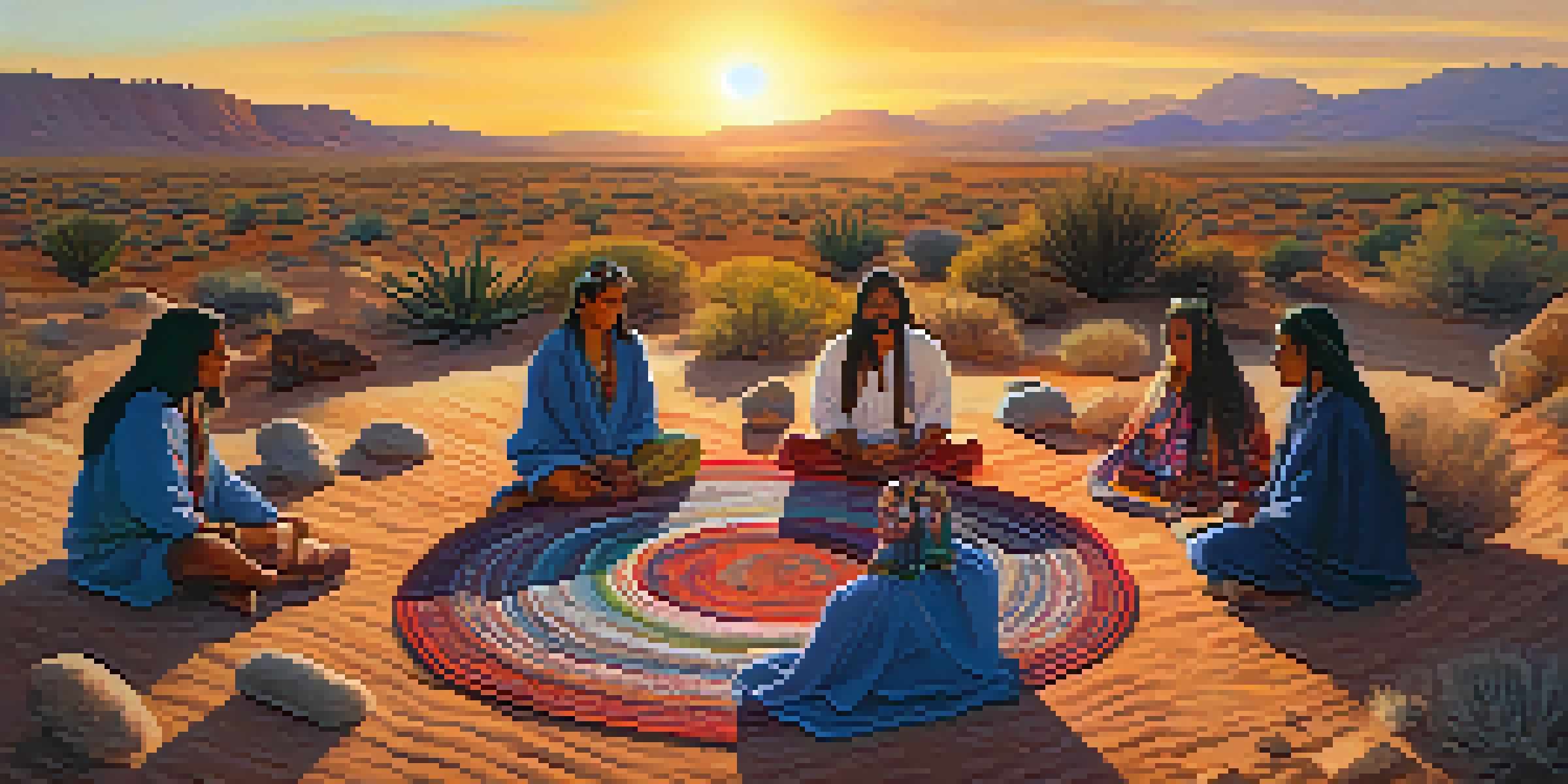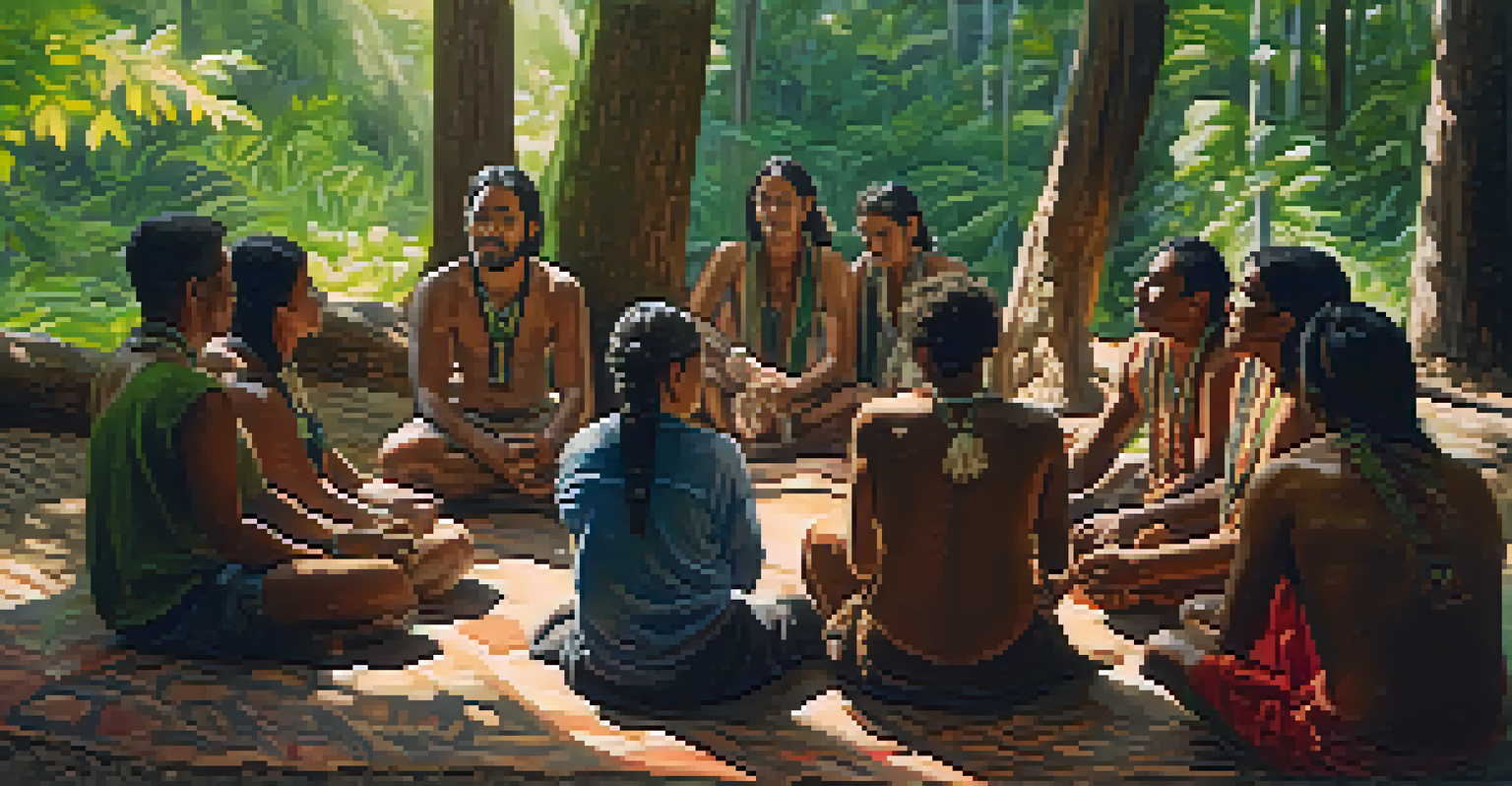The Role of Peyote in Creating Healing Ceremonial Spaces

Understanding Peyote and Its Cultural Significance
Peyote, a small cactus native to Mexico and the southwestern United States, has been used for centuries in various Native American spiritual practices. Its psychoactive properties stem from the compound mescaline, which induces altered states of consciousness. This cultural connection makes peyote a sacred symbol of healing and spiritual growth for many indigenous communities.
The wound is the place where the Light enters you.
Traditionally, peyote is not consumed casually; it is revered as a medicine that fosters deep introspection and connection with the divine. In ceremonies, it’s often accompanied by songs, rituals, and community support, creating a holistic environment for healing. This profound respect for peyote highlights its role beyond just a plant—it embodies a way to access spiritual wisdom.
Understanding the cultural significance of peyote is crucial for anyone interested in its use in healing ceremonies. It’s not simply about the experience but the context, respect, and intentions behind it that shape the healing process.
Creating Safe and Sacred Space for Ceremonies
A successful healing ceremony begins with establishing a safe and sacred space. This involves careful planning, including selecting a suitable location and inviting participants who share a common purpose. The environment should evoke feelings of safety and openness, allowing participants to fully engage with their healing journey.

Rituals, such as cleansing the space with smoke from sacred herbs, help to set the tone and invite positive energies. The intention behind these practices is to create a barrier against negativity and distractions that can disrupt the experience. Lighting, music, and even the seating arrangement play significant roles in enhancing the ceremony's atmosphere.
Peyote's Cultural Significance
Peyote is revered in Native American cultures as a sacred medicine that facilitates spiritual healing and introspection.
When participants feel secure in their environment, it nurtures trust and encourages vulnerability. This atmosphere is essential for the deep emotional and spiritual work that peyote ceremonies often facilitate.
The Psychological Impact of Peyote in Healing
The psychological effects of peyote can be profound, often leading to heightened awareness and insight. Participants frequently report experiencing a sense of connectedness to themselves, others, and the universe. This expanded consciousness can help individuals confront and process unresolved emotional issues, fostering healing.
Healing is a matter of time, but it is sometimes also a matter of opportunity.
During a ceremony, the introspective journey prompted by peyote allows for deep reflection, which can illuminate paths to personal transformation. Many find that the visions or feelings experienced during these ceremonies provide clarity and guidance in their lives. This therapeutic aspect of peyote is one of the reasons it is held in such high regard.
Moreover, these psychological benefits are often amplified by the supportive community present during the ceremony. Sharing experiences and insights with others fosters a collective healing process that can be incredibly powerful.
Navigating Challenges in Peyote Ceremonies
While peyote can offer profound healing, it’s not without challenges. Some participants may experience overwhelming emotions or discomfort during the ceremony. It’s essential for facilitators to be prepared to support individuals through these difficult moments, ensuring they feel safe and understood.
Establishing clear guidelines and expectations prior to the ceremony can help mitigate potential issues. Participants should be informed about the effects of peyote and encouraged to communicate openly about their feelings throughout the experience. This proactive approach fosters a sense of community and collective responsibility.
Creating a Safe Ceremony Space
Establishing a secure and sacred environment is essential for participants to engage fully in their healing journey during peyote ceremonies.
Facilitators also play a crucial role in guiding participants through their challenges, using their knowledge and experience to provide reassurance and support. This guidance can help individuals navigate their emotional landscapes and emerge from the ceremony with a deeper understanding of themselves.
The Role of Community in Healing Ceremonies
Community is a cornerstone of healing ceremonies involving peyote. The shared experience fosters a sense of belonging and support that can enhance individual healing journeys. When participants come together, they create a collective energy that amplifies the healing potential of the ceremony.
In many indigenous cultures, the communal aspect of these ceremonies is emphasized, as healing is seen as a collective responsibility. Participants are encouraged to support one another, sharing insights and experiences that contribute to the overall healing atmosphere. This interconnectedness helps individuals feel less isolated in their struggles.
Ultimately, the bonds formed within the community can extend beyond the ceremony, promoting ongoing support in participants' healing journeys. This enduring connection reinforces the idea that healing is not a solitary endeavor but a shared experience enriched by compassion and understanding.
Integrating Peyote Experiences into Daily Life
After a peyote ceremony, participants often face the challenge of integrating their experiences into daily life. The insights gained during the ceremony can be transformative but may feel overwhelming without a plan for applying them. Reflective practices, such as journaling or meditation, can help individuals process their experiences and find meaning in them.
Establishing a routine that incorporates lessons learned from the ceremony can also be beneficial. This might include setting intentions, practicing gratitude, or engaging in community service. By actively integrating these insights, individuals can foster personal growth and maintain the positive changes initiated during the ceremony.
Community's Role in Healing
The communal aspect of peyote ceremonies enhances individual healing by fostering support and shared experiences among participants.
Additionally, staying connected with the community formed during the ceremony can provide ongoing support and motivation. Sharing experiences and challenges with others who understand the journey can help reinforce the lessons learned and encourage a continued path of healing.
Ethical Considerations in Peyote Use
As interest in peyote grows, it’s vital to address the ethical considerations surrounding its use. Many indigenous communities view peyote as a sacred medicine, and its commercialization or misuse can dilute its spiritual significance. Respecting the traditions and practices of these communities is paramount to ensure that peyote is treated with the reverence it deserves.
Engaging with indigenous leaders and participating in ceremonies led by them can help ensure that the experience is respectful and aligned with cultural practices. It’s essential to acknowledge the historical context and the ongoing struggles that these communities face regarding the preservation of their traditions.

By approaching peyote use with humility and an understanding of its cultural significance, individuals can foster a more respectful relationship with this sacred medicine. This ethical framework not only honors the plant but also contributes to the integrity of the healing process.